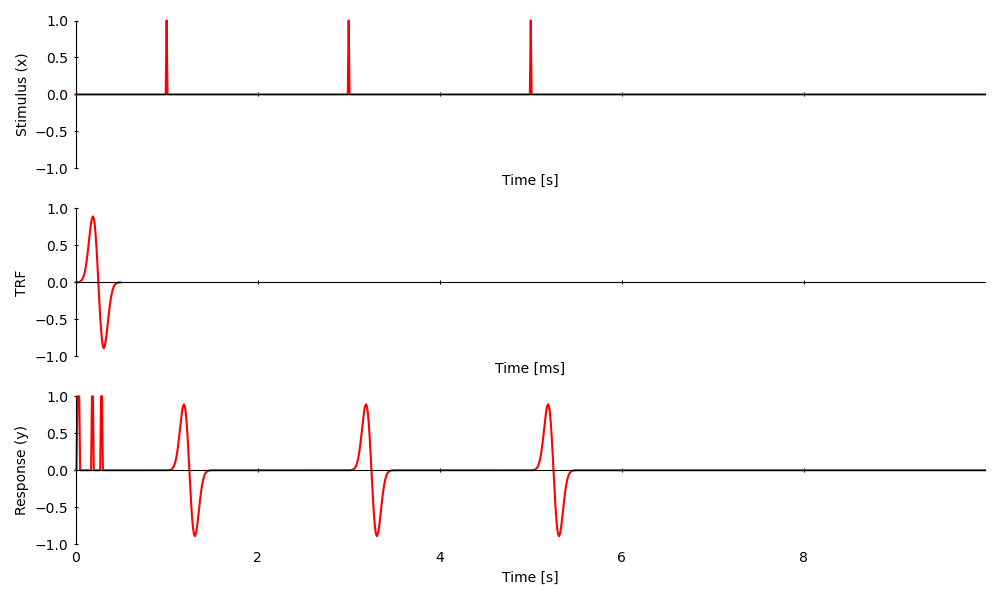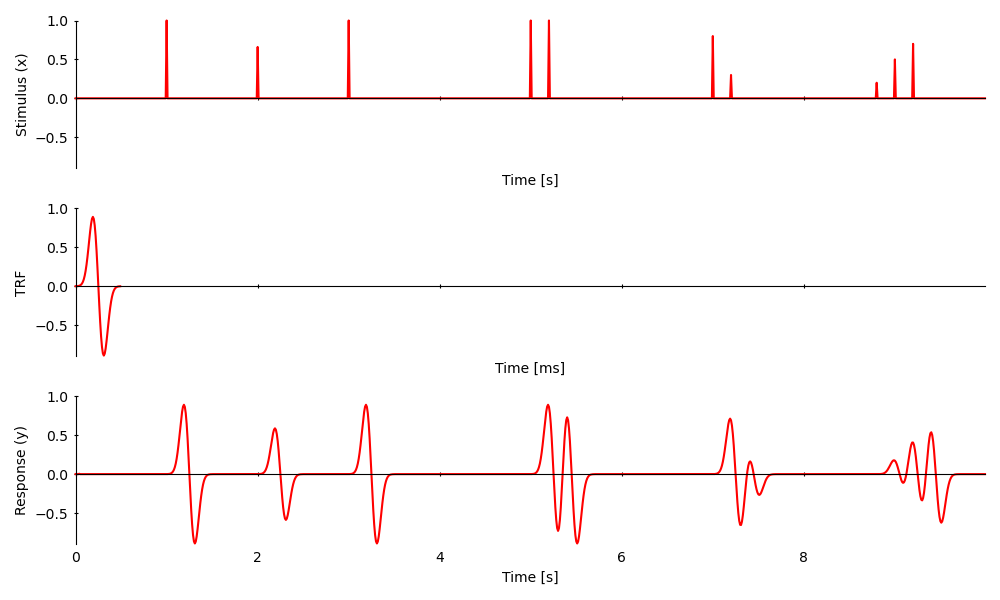Note
Go to the end to download the full example code
Introduction to Temporal Response Functions (TRFs)
A temporal response functions (TRFs) is a linear model of the stimulus-response depency. The response is predicted by a linear convolution of the stimulus with the TRF. This means that for every non-zero element in the stimulus, there will be a response in the shape of the TRF:
from eelbrain import *
import numpy as np
# Construct a 10 s long stimulus
time = UTS(0, 0.01, 1000)
x = NDVar(np.zeros(len(time)), time)
# add a few impulses
x[1] = 1
x[3] = 1
x[5] = 1
# Construct a TRF of length 500 ms
trf_time = UTS(0, 0.01, 50)
trf = gaussian(0.200, 0.050, trf_time) - gaussian(0.300, 0.050, trf_time)
# The response is the convolution of the stimulus with the TRF
y = convolve(trf, x)
plot_args = dict(columns=1, axh=2, w=10, frame='t', legend=False, colors='r')
plot.UTS([x, trf, y], ylabel=['Stimulus (x)', 'TRF', 'Response (y)'], **plot_args)

<UTS: None>
Since The convolution is linear,
scaled stimuli cause scaled responses
overlapping responses add up

<UTS: None>
When the stimulus contains only non-zero elements this works just the same, but the TRF might not be apparent in the response anymore:

<UTS: None>
Given a stimulus and a response, there are different methods to reconstruct
the TRF. Eelbrain comes with an implementation of the boosting()
coordinate descent algorithm:

<UTS: None>